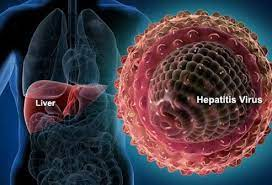
Hyderabad, July 27 : Every year, July 28 is observed as World Hepatitis Day, to help create awareness in people about the effects of hepatitis that can cause liver inflammation, liver cancer and major liver related diseases.
This year, the World Health Organisation (WHO) World Hepatitis Day theme is “One Life, One Liver”, which focuses on creating awareness in the public for prevention of liver cancer, early detection and available facilities for prescribed treatment, stressing authorities to quicken the necessary steps to eradicate the viral infection to meet the 2030 global health targets.
Viral hepatitis is a global health problem that caused 1.34 million deaths in 2015, which is higher than the deaths caused by tuberculosis and HIV.
Hepatitis B and C are solely responsible for 96 per cent of hepatitis mortality.
According to Dr. Chalapathi Rao Achanta, Clinical Director and Chief of Department (Gastroenterology), Interventional Endoscopy and Liver Transplantation, KIMS ICON – Vizag, “our liver silently performs more than 500 vital functions every day to keep you alive. But, the symptoms of viral hepatitis seem to be seen only in the advanced stage.”
There are many different types of Hepatitis viruses (A to E), but B and E are the most concerning types that caused more than 8,000 new infections everyday which are undetectable.
In India, more than 40 million people are chronically affected with Hepatitis B and 6-12 million people are infected with Hepatitis C.
HAV is the most common type of hepatitis that is observed in children, which made it a public health problem.
India is currently in the category of intermediate zone (4 per cent).
Hepatitis B positivity in the population ranges from 1.1 per cent to 12.2 per cent, with a prevalence of 3-4 per cent.
On the other hand, Hepatitis C antibody prevalence is estimated inbetween 0.09 per cent to 15 per cent.
Some regional level studies show that 6-12 million people in India have Hepatitis C.
Dr. Lingaiah Miryala, MBBS, MD(Internal Medicine), Consultant General Physician, Amor Hospitals said, “Hepatitis C virus is passed on to a baby during childbirth. About 4 per cent women pass it during childbirth.”
Hepatitis C symptoms are observed very late until it’s reached the advanced stage.
However, some symptoms may include fatigue, itching, nausea, muscle weakness, stomach pain and jaundice. These symptoms are non specific, which makes it difficult to diagnose Hepatitis C. Diagnosis of Hepatitis C can be done using blood tests for antibodies.
Women with Hepatitis C are recommend testing the baby when they are atleast 18 months old.
Treatment options will help people clear the virus. Medications are very beneficial. For anyone with liver damage, doctors will recommend them to avoid usage of alcohol, drugs or tobacco. The general medications are also also reviewed.
By not sharing needles, glucose monitors and drug related
equipment Hepatitis C can be prevented.
Following safety precautions such as sterilization, disposing all sharp objects and preventing blood-to-blood transfers helps.
According to V. Pavan Kumar, Consultant Surgical Gastroenterology, SLG Hospitals, Bachupally: “There’s no cure to hepatitis once it occurs and it can ultimately lead to liver cancer. Even if you are cured, Hepatitis C can come back again. Research shows that 75 per cent of new Hepatitis C infections are being shares from injections during drug equipment. Thus you can still get Hepatitis after it’s cured. Hepatitis A is highly contagious and can spread very easily.
“Hepatitis A goes away easily on it’s own and does not cause
any long term liver damage. People living with Hepatitis B might need a liver transplant if their liver begins to fail, which occurs in diseases not being monitored or diagnosed properly. It is the only curative option for patients with complications from HBV.”
Anuj Patel, Laparoscopic, UGI & Bariatric surgeon, Century Hospital said: “Hepatitis C liver transplant to patients who are non infected is novel. Previously, only patients with HCV-positive livers received HCV livers. This is a much needed donor pool where the wait time is much shorter and an average patient is willing to accept the liver. There is almost two times chance of getting liver transplant compared with the national average.
“This study is part of an effort to reduce waitlist mortality by studying the extended criteria of organ transplant options. Hospitals across India are keen to expand the donor pool. This approach along with transplanting livers from donation after cardiac death donors and other extended criteria donors has shortened the waitlist times, increasing transplant rates.”






